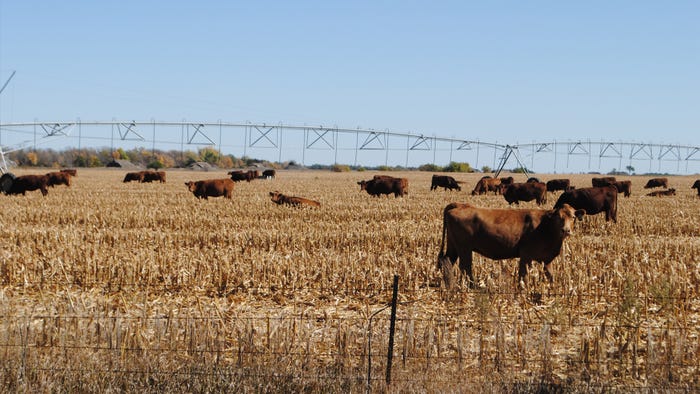
Harvest is done, and the cornstalks are out there. In many parts of livestock country, that means grazing time for cattle.
Utilizing the nutrition in crop residue through late fall and winter grazing is an age-old, tried-and-true practice. But recent research has proven that the benefits are not just to livestock producers and their winter hay and forage inventories. There are pluses for subsequent crops on that grazed land as well.
According to University of Nebraska researchers, fall or spring cornstalk grazing has no impact on corn yields the following year, and this practice may boost subsequent soybean yields by 2 to 3 bushels per acre.
On land producing up to 150 bushels per acre in corn yield, producers can expect about 3 tons per acre of residue left after harvest. Of that amount, about 40% is highly digestible leaf and husk residue. In fact, those same fields with production around 150 bushels per acre can sustain a stocking rate of about 1.7 animal unit months per acre, according to UNL.
What that means is that this practice of grazing cornstalks is a win-win deal for livestock and crop producers. However, traditionally there has been some pushback from landowners who do not want livestock grazing crop residue on their land. They worry about soil compaction issues and the risk of reducing yield the next growing season.
UNL studies and others have proven this to be wrong and have refuted these claims and touted the benefits of grazing in real numbers. We’ve pulled together a number of recent articles by our Farm Progress team members on this subject to help provide a resource for farmers interested in managing their cornstalks for grazing, and hoping to garner feedstuffs out in the field over the winter months to save on winter forage feeding.
Click through slideshow to read the articles and for resources to learn more.
Read more about:
GrazingAbout the Author(s)
You May Also Like






